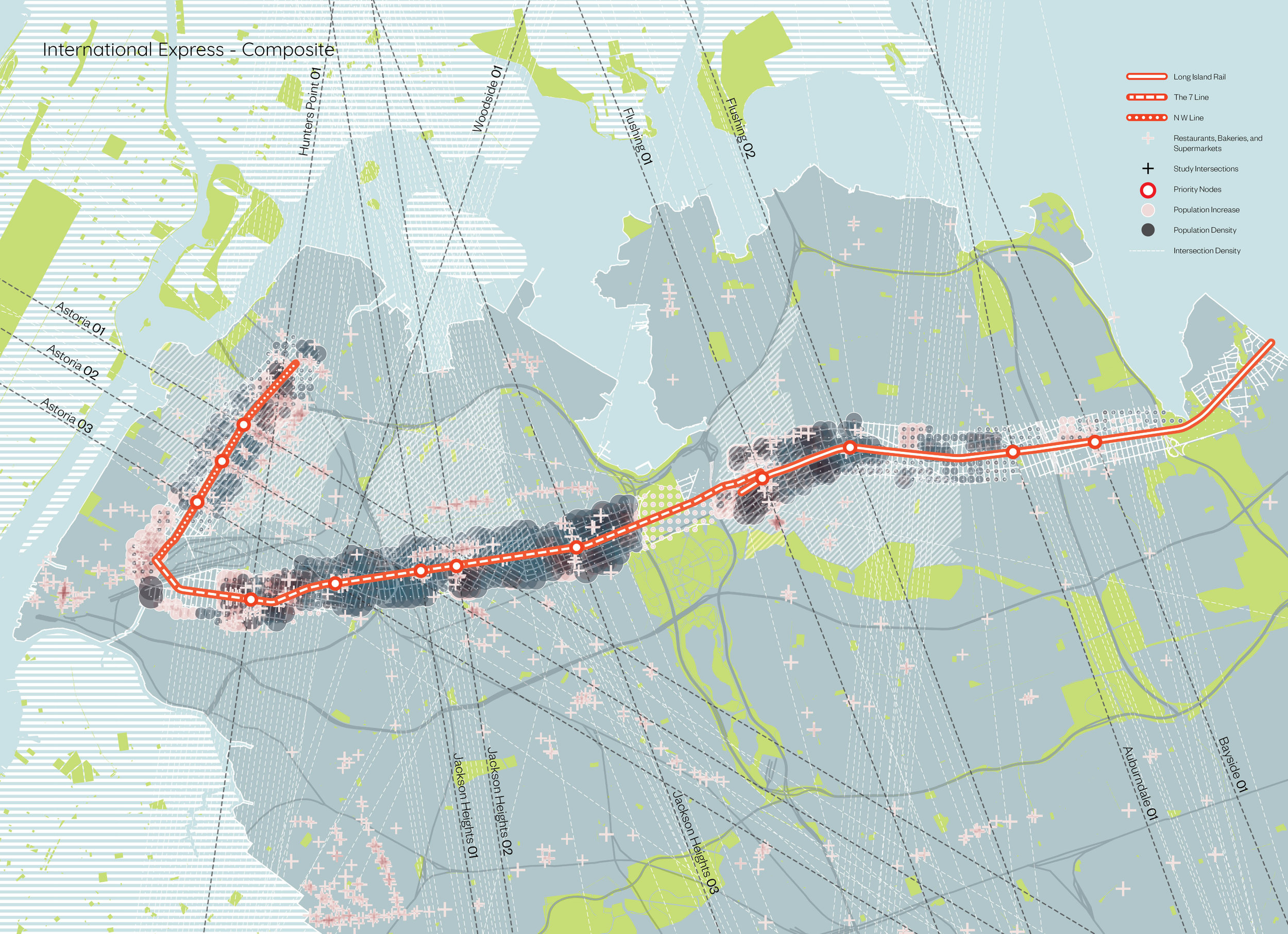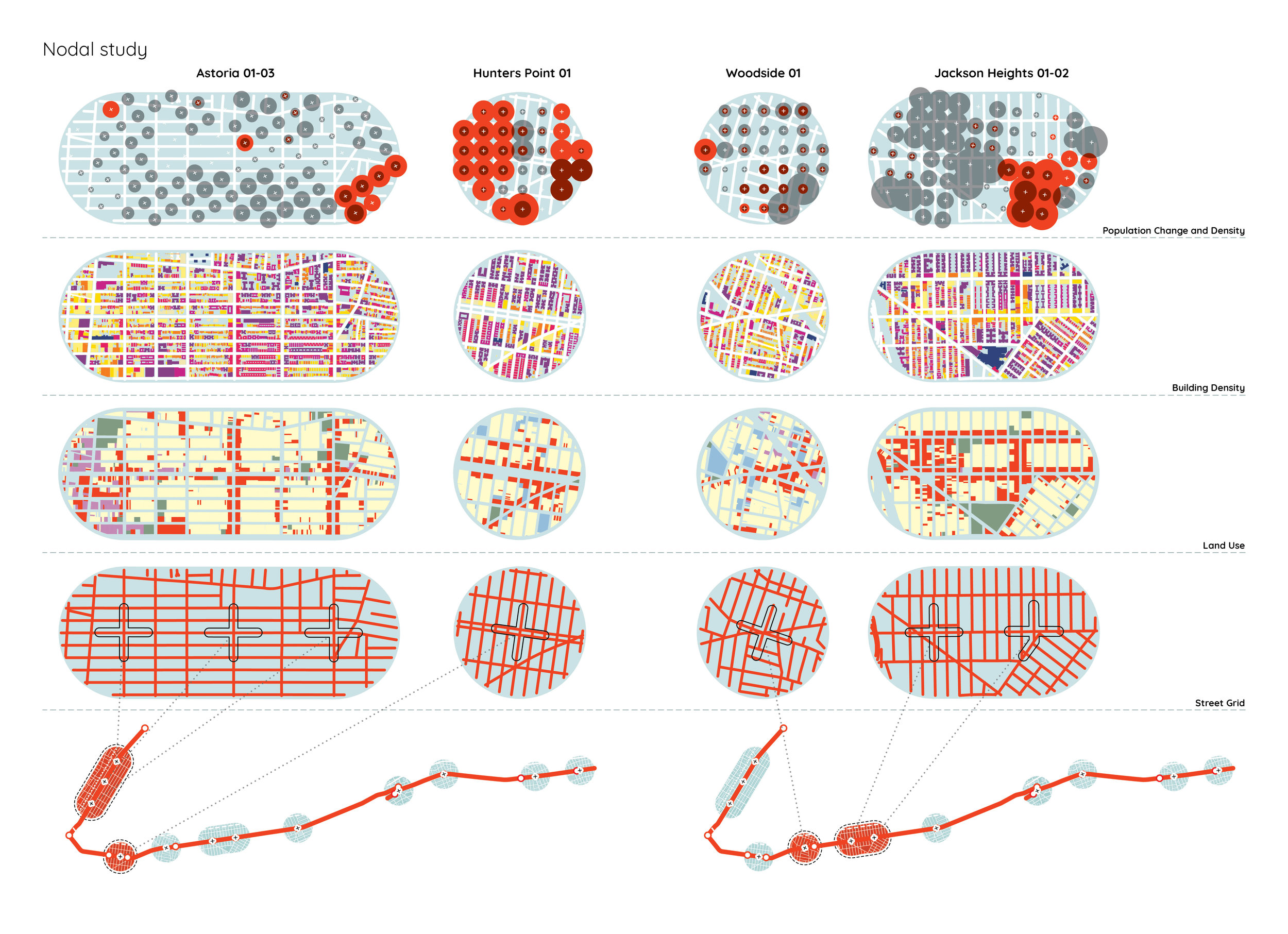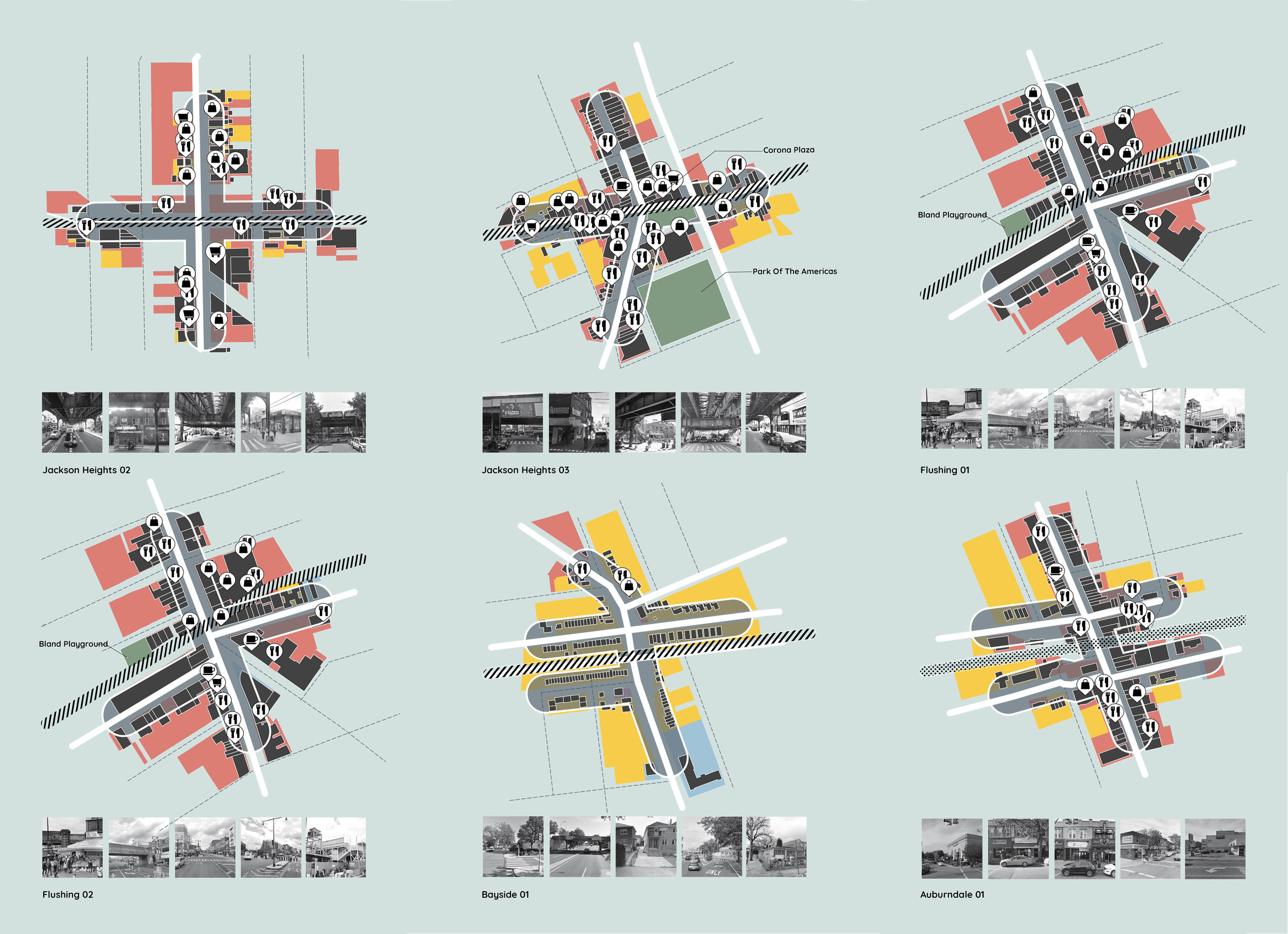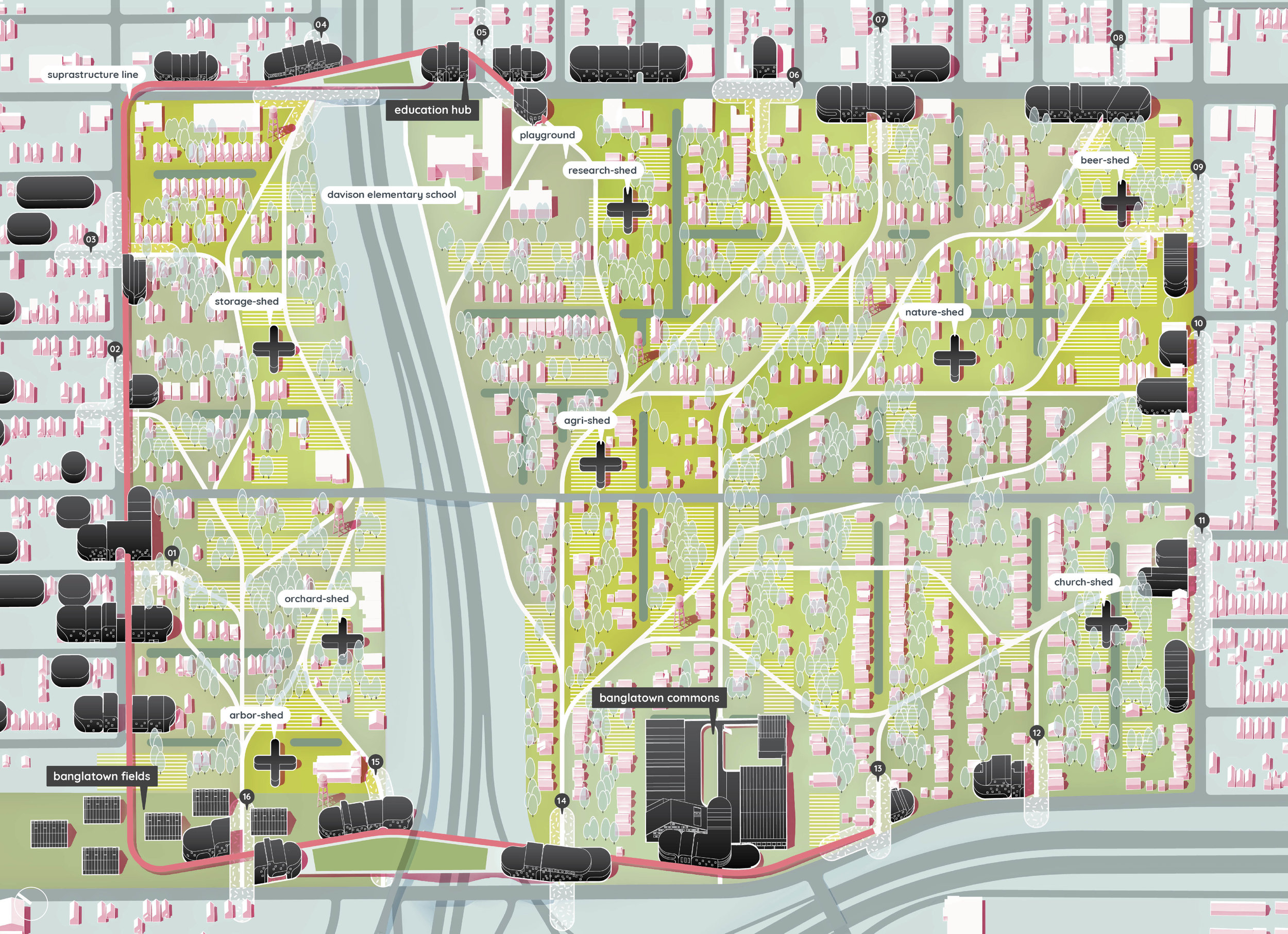Infra_
Suprastructure
Fall 2019
Collaborators: Xing Zhou, Yufan Hao, Salvador Lindquist
1. Infrastructural Boundaries
In Queens, prototypical representational methodologies were used to define an itinerary in which we observed intersections along the International Express. We learned from Queens by cataloguing conditions of urban heterogeneity and the protocols that support them. These strategies were then applied in the neighborhood of Banglatown in Detroit, MI.
Our project was interested in how linear infrastructure can impact the surrounding urban fabric by mediating and recombining urban flows at key intersections. While the field work in Queens focused on elevated train lines as the central infrastructure, in Banglatown we looked at localized and regional flows of existing and emerging cultural and productive landscapes along major vehicular corridors.
To give a brief overview of our research in Queens, we looked at physical boundaries like rail and highway infrastructure and how they impact communities. Through mapping and walking Queens, we came across a piece of remarkable transportation infrastructure with high levels of activity along the N W line, the 7 line, and the Long Island Railroad. This sequence served as our itinerary for the field work. Initially, we began at a block scale and an intersection scale, mapping elements like population change/density, the street grid, building density, land use, and points of interest. We were particularly intrigued in the morphology and activity of these intersectional nodes, which become more heterogenous as you transition from dense city fabric to the liminal fringe of the city. These nodes were the primary location of our typological research.
2. A Catalogue.
The typologies we observed indicate and encourage vibrant urban life, negotiating between convergent and divergent flows of people and activity. There are three categories for the catalogue, 01 Mediated Seams, 02 Catalytic Boundaries, 03 Articulated Junctions.
01 Mediated Seams is the condition of the corridor itself and the ways that it navigates and negotiates with architectural adjacencies. We looked at elevational characteristic of the movement, above and below, building orientation, and building types.
02 Catalytic Boundaries considers the permeation of the street grid,the continuity of various elements across the boundary, and the ability of the line to act as gateway.
03 Articulated Junctions looks at the intersection and how certain elements activate vibrant hubs of urban activity. We looked at types of commercial, open space, and articulation through components like furnishings, access, and programming.
3. Landing the Suprastructure.
In process architecture, infrastructure is defined as a process system's component parts and their interactions. The suprastructure considers the super system of which the process system is a part. In the case of Banglatown, we wanted to use the idea of the Suprastructure in the form of a catalytic boundary, where it encapsulates a portion of Banglatown and mediates between flows of existing cultural assets.
The goals are two-fold: 1. stitch together a neighborhood that was separated by a highway and 2. preserve the unique urban life and culture that has emerged inside the eroded neighborhood. Our site was selected through observing flows of current ecological, performative, and cultural assets with the potential to apply the research conducted in Queens. We started by observing the presence of infrastructure, the street grid, and population density. We were drawn to the I-75 and Davison Freeway interchange as a perfect example of how infrastructure can divide communities. Also, the adjacent neighborhoods on either side of the Freeway are starkly more vacant than the surrounding Banglatown area.
4. Flows and Components.
The existing cultural and ecological flows that we wanted to build on include the commercial corridor along Joseph Campau Ave, Davison Elementary School, a string of religious institutions along Carpenter Avenue, an abandoned career/community center, and a large abandoned formerly industrial parcel. Additionally, the interior landscape revealed a series of emerging ecologies as well as urban agricultural sites. By understanding these conditions we could better understand how they might intersect in unconventional ways.
5. Assembling the Suprastructure.
With the establishment of a catalytic boundary, an inside and an outside are inevitable, which we refer to as the Autogenous and Exogenous, respectively. This is important in identifying flows in and out of the neighborhood.
The Autogenous: We’re proposing a radical reorganization of the interior of the Suprastructure by weaving a new circulation network through vacant lots to create productive and ecological pockets of land. This new network meets the perimeter to become ‘articulated junctions’. The abandoned roads now form a connected stormwater infrastructure network leaving more of the available land for productive use. Assorted ‘Sheds’ act as receptacles of regionalized flows of productive and ecological processes, linking the neighborhood to the rest of the city and beyond.
The Exogenous: The perimeter of the Suprastructure absorbs all adjacent vacant land including the Elementary School, the Career Center, and the defunct water treatment plant, which become sites of urban intervention. These absorbed lots are the locations of our applied hybrid typologies, which mediate between localized cultural, ecological, and productive flows through a diagrammatic architectural assemblage. This assemblage hints at a future infrastructure, one that sponsors a vibrant, heterogenous community.















